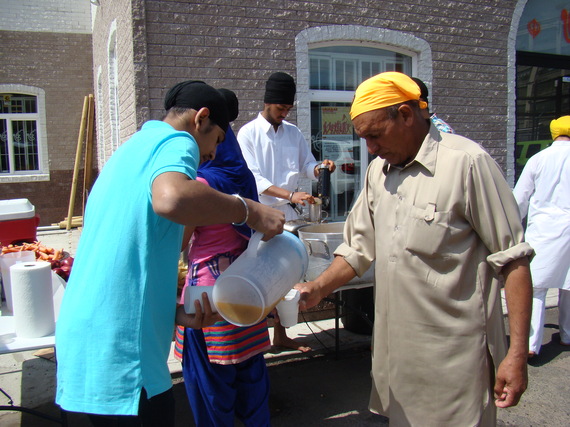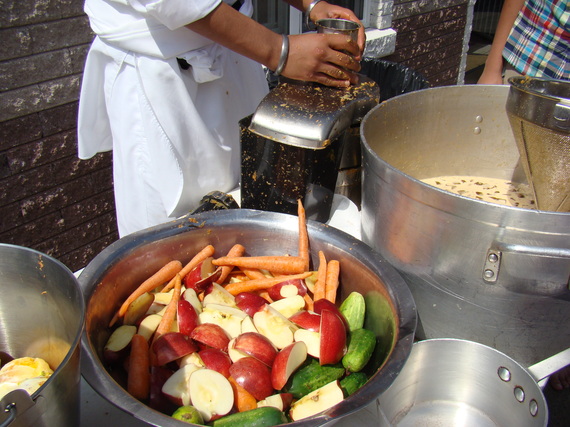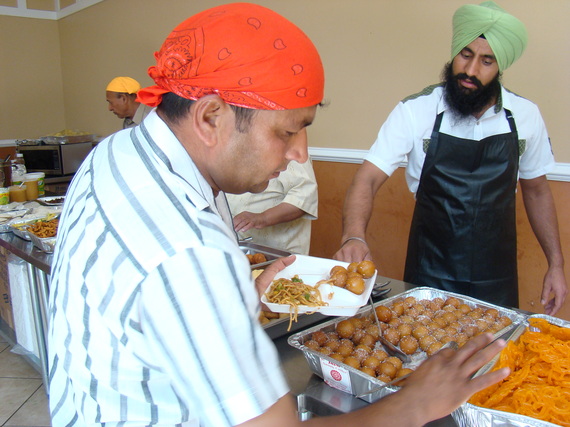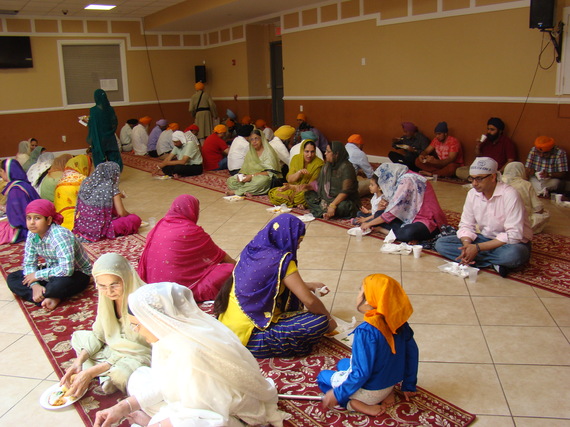On a particularly sweltering Sunday this past July, young Sikh volunteers in vibrantly colored turbans, gathered outside the Nanak Naam Jahaj Gurudwara, Jersey City., to welcome their brethren with cups of refreshing ice cold juice -- a healthy precursor to what awaited attendees inside their house of worship. The occasion was to mark the life of of Sri Guru Arjun Dev, the fifth Sikh Guru, who was martyred for his faith in Sikhism, a religion founded in North India.
Laid out on large horizontal tables was a smorgasbord of vegetarian dishes and sweets to tantalized anyones senses. The dishes included jalebis and gulab jamun (fried dough soaked in sugar syrup), followed by bhature (deep fried flatbread), chole (chickpeas in spicy gravy), pakoras (vegetabke fritters), vegetable noodles, doklas (savory steamed cakes made with ground lentils), idlis (steamed rice cakes), cocunut chutneys, and a variety of salads and fruits.
This feast prepared and cooked mainly by women with a few male volunteers was not the main meal of the day.
"These are only appetisers," explained Gagan Preet Singh, 22, my Gurudwara guide. "After the prayers are performed, lunch will be served. Every week a different family hosts langar."
She explained that the serving of free food or "Langar," is an important tenet of the Sikh religion. It originally meant cooking food to feed the needy and the homeless but over the years the concept has broadened and langar now means to cook to feed the entire congregation. Today Nanak Naam Jahaj employs a full time cook and is open every day of the week. Often it's used as a shelter to house those in need.
"Langar is a concept of equality, of sharing, of a congregation coming together," explained Harpreet Kaur, a volunteer. "Here only the preachers and singers of scriptures sit up on a raised platform. Langar represents equality where everyone else sits on the floor."
As she spoke scores of attendees helped themselves to this appetizing meal and ate crosslegged. The adjacent kitchen meanwhile was bustling with women working frenetically to replenish the food that was being consumed. About a dozen women were rolling out and frying bature, others were preparing aloo tikkis (a mixture made of potatoes, onions, breadcrumbs and spices), and in the corner were more women making a salad out of cucumbers, carrots, radish and tomatoes.
While the women cooked, holy scriptures were read in the prayer room which later turned to the singing of religious hymns, broadcast throughout the Gurudwara so even the women who worked could listen in.
The women were dressed in traditional Indian garb with heads covered with colorful scarfs (a sign of respect observed by both men and women within the gurudwara). Nearby, in large stainless steel vats awaited lunch which would be served later in the afternoon. This consisted of paneer with vegetables (cottage cheese), more chole, rice and dessert.
It looks like an incredible amount of food, but Singh explained that it's just enough to feed the 400 people who attend the service and the langar afterward.
"It's always like this -- packed -- as it's not just Sikhs who come here," she said. "Since Jersey City is diverse, a lot of students from India come here as it gives them a homely feeling."
Vegetable and Fruit Juice
4 oranges
4 cucumbers
4 carrots
4 apples
1 Tbsp black salt
Lots of ice
Blend all ingredients together.




